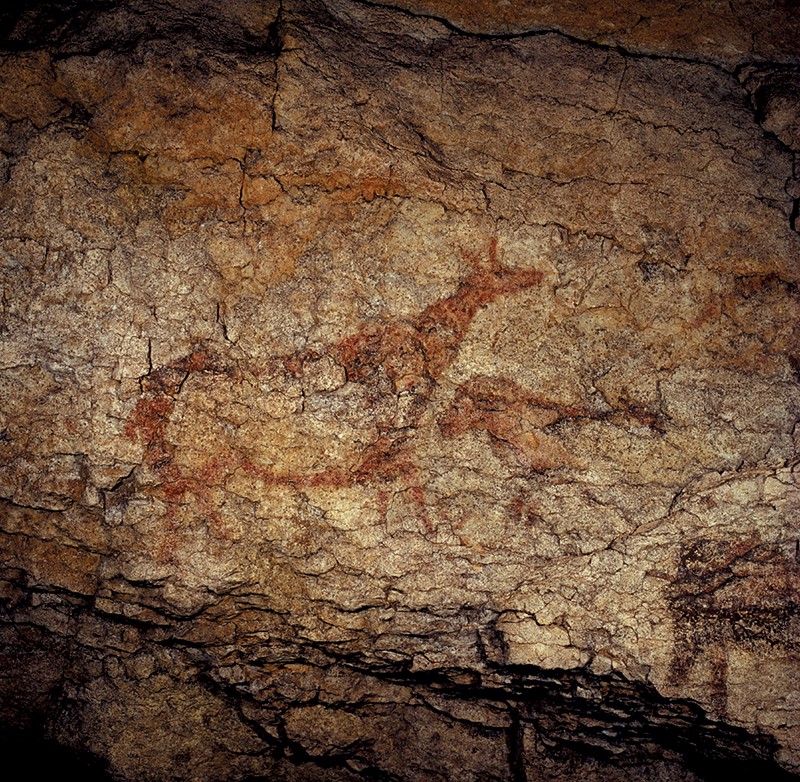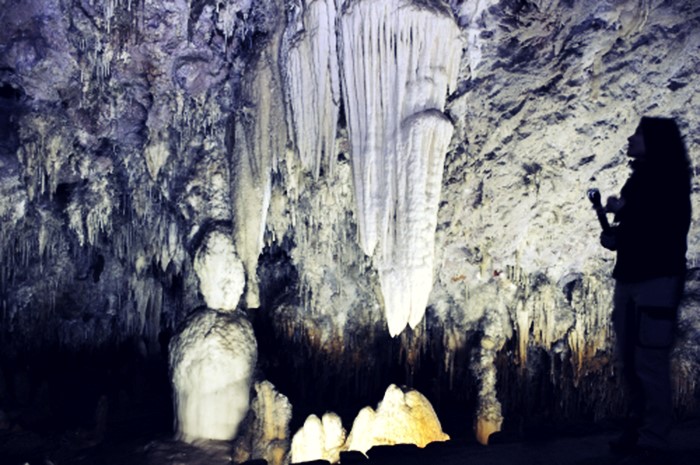“Open Sesame!” shouted Ali Babá. And the great rock opened to reveal a cave full of gold and jewels.
But we won’t be finding any caves like this in real life, not even with the help of a map or a GPS. However, there are several caves in our country containing something more precious than any diamond.
In Cantabria, dozens of caves containing prehistoric rock art link directly with the Palaeolithic era. This represents a true treasure for this region that has been declared Human Patrimony by the UNESCO.
Some of this rock paints are over 30.000 years old, linking directly with this land’s prehistoric habitants, and have been preserved from sun, rain and wind beneath the earth.
Ancient nomads drew typical animals from their time on the caves’ walls –such as mammoths, lions or bears. They made use of the nick and crannies on the wall for adding depth and texture to their paintings, and even painting over other designs in order to give the impression of moving flocks and herds.
As the best example, we can find the Altamira Cave, considered by some as the ‘Sistine Chapel’ for rock art. Located in the Santillana del Mar municipality, it was initially found in 1868 by a huntsman when his hound was trapped inside. Later, in 1876, palaeontologist Marcelino Sáenz de Sautuola discovered the paintings –actually, it was his daughter who pointed out and said: “look dad, oxen!”. Today, only 35 people per day can visit the cave, for a limited amount of time, in order to preserve it from tourism’s footprint.

But Altamira is not the only option. There are 18 different caves with examples of Paleolitic art in Northern Spain. El Pendo, for example, has some of the best prehistoric apparel collections, including the famous Ceremonial Baton.
We can also visit the Hornos de la Peña cave, containing only engravings, famous by the ancient horse engraving we can find at the entrance –one of the few rock art samples that can be found outdoors in the Cantabrian coast. It is also worthy of mention other representations of horses, goats, and a human raising his arms to the sky.
Finally, located between the Vañdáliga and Rionansa municipalities, we can find El Soplao. It doesn’t contain any significant rock art, but the quantity and quality of its geological formations makes it unique. It dates from the Mesozoic era, and has been open to the public since 2005.
These four caves are only an example of the Prehistoric art we can find in Cantabria. There are multiple other places to visit, as Cullavera, Fuente del Salín, Chufín, del Porquerizo, Las Aguas, Sovilla, La Meaza, monte Castillo, La Estación, los Marranos…

But we would need to rest after a day visiting the caves. To that end, Vincci Hotels suggests you the. Vincci Puertochico 4* Santander, where you can relax after spending the day underground. It is located in downtown Santander, perfect for getting to visit the city too.

Mirando a la bahía, enfrente de la zona marítima de la ciudad, Vincci Puertochico 4* Santander se diferencia por su especial ubicación. Podrás degustar pinchos y raciones en el bar Lounge, relajarte en su terraza o, simplemente, descansar en tu suite mirando al mar.
Cantabria and Vincci are waiting for you.

